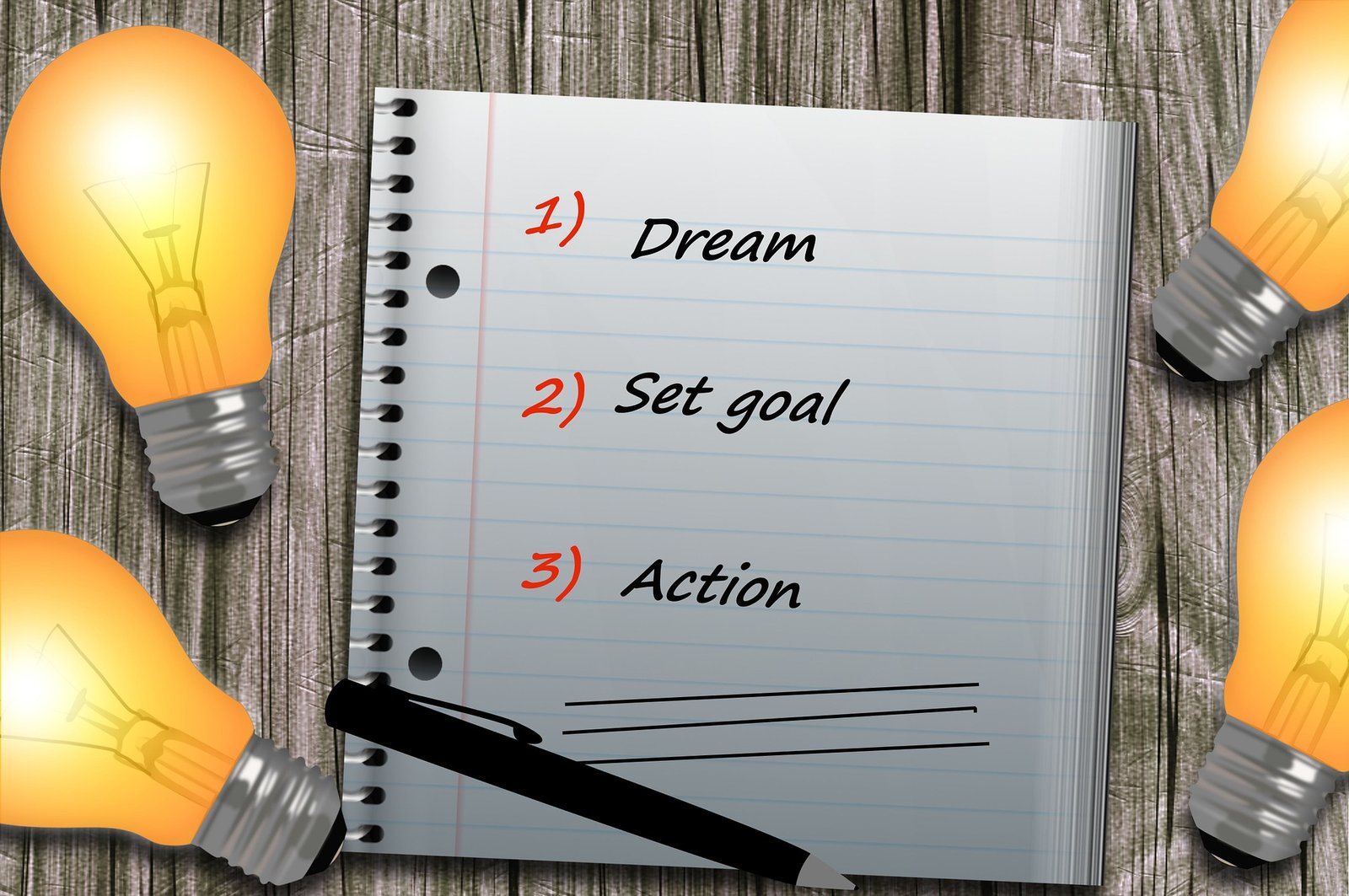Boost Motivation: 10 Proven Strategies to Stay Driven and Accomplish Your Goals

Boosting motivation is a common goal for individuals seeking to achieve success in various aspects of their lives. Whether it’s in the workplace, academia, or personal endeavors, motivation is a key factor in driving individuals towards achieving their goals. However, maintaining high levels of motivation can be challenging, especially when faced with obstacles or setbacks.
One effective way to boost motivation is by setting clear and specific goals. This allows individuals to have a clear understanding of what they want to achieve and provides direction for their efforts. Additionally, breaking down larger goals into smaller, achievable milestones can help individuals stay motivated as they see progress towards their ultimate goal. Another way to boost motivation is by finding intrinsic motivation, or motivation that comes from within. This can be achieved by identifying personal values and connecting them to the goals being pursued. When individuals have a strong connection between their values and their goals, they are more likely to stay motivated and committed to achieving them.
Understanding Motivation
Motivation is a crucial factor in achieving goals and maintaining a positive attitude towards work and life. It is the driving force that inspires individuals to take action and achieve their desired outcomes. Understanding motivation is essential for individuals who want to boost their productivity and achieve success in their personal and professional lives.
The Psychology of Motivation
Psychologists have identified several theories of motivation that explain why individuals behave in certain ways. One of the most popular theories is Maslow’s Hierarchy of Needs, which suggests that individuals have basic needs that must be met before they can focus on higher-level needs, such as self-actualization. Another theory is the Self-Determination Theory, which suggests that individuals are motivated by a sense of autonomy, competence, and relatedness.
Motivation can also be influenced by external factors, such as rewards and punishments. The Expectancy Theory of Motivation suggests that individuals are motivated by the belief that their efforts will lead to a desired outcome. In contrast, the Equity Theory of Motivation suggests that individuals are motivated by a sense of fairness and equality in the workplace.
Intrinsic vs Extrinsic Motivation
Motivation can also be classified as intrinsic or extrinsic. Intrinsic motivation is driven by internal factors, such as personal satisfaction and a desire for self-improvement. Extrinsic motivation, on the other hand, is driven by external factors, such as rewards and recognition.
Research has shown that intrinsic motivation is more effective in promoting long-term behavior change and maintaining motivation over time. Therefore, individuals should strive to cultivate intrinsic motivation by finding meaning and purpose in their work and focusing on personal growth and development.
In summary, understanding motivation is essential for individuals who want to boost their productivity and achieve success. By understanding the psychology of motivation and the difference between intrinsic and extrinsic motivation, individuals can develop strategies to cultivate intrinsic motivation and achieve their desired outcomes.
Setting Clear Goals
One of the most effective ways to boost motivation is by setting clear goals. When individuals have a clear understanding of what they want to achieve, they are more likely to stay focused and motivated. In this section, we will explore two key strategies for setting clear goals: the SMART goal framework and visualizing success.
SMART Goal Framework
The SMART goal framework is a popular method for setting effective goals. SMART stands for Specific, Measurable, Achievable, Relevant, and Time-bound. By following this framework, individuals can create goals that are clear, concise, and achievable.
To create a SMART goal, individuals should start by defining the specific outcome they want to achieve. They should then identify how they will measure progress towards that goal. Next, they should consider whether the goal is achievable given their current resources and capabilities. They should also ensure that the goal is relevant to their overall objectives. Finally, they should set a deadline for achieving the goal.
Visualizing Success
Another effective strategy for setting clear goals is visualizing success. This involves creating a mental image of what it will be like to achieve the goal. By visualizing success, individuals can create a sense of excitement and motivation that will help them stay focused on their goal.
To visualize success, individuals should start by imagining themselves achieving the goal. They should then think about how they will feel when they achieve the goal. They should also consider the benefits that will come from achieving the goal. By focusing on these positive outcomes, individuals can create a sense of excitement and motivation that will help them stay focused on their goal.
In conclusion, setting clear goals is an effective way to boost motivation. By using the SMART goal framework and visualizing success, individuals can create goals that are clear, concise, and achievable. By staying focused on these goals, individuals can stay motivated and achieve success.
Creating a Motivation-Driven Environment
Motivation is essential for success, whether it’s in your personal life or at work. Creating a motivation-driven environment can help individuals stay focused and driven towards achieving their goals. Here are a few ways to cultivate such an environment:
Cultivating a Positive Mindset
A positive mindset can go a long way in boosting motivation levels. Encouraging employees to focus on their strengths and accomplishments can help them feel more confident and motivated. One way to do this is by providing regular feedback and recognition for a job well done. This can be in the form of verbal praise or written feedback.
Another way to cultivate a positive mindset is by promoting a healthy work-life balance. Encouraging employees to take breaks and recharge can help prevent burnout and keep them motivated in the long run.
Designing a Productive Workspace
The physical environment can also play a role in motivation levels. A well-designed workspace can help employees feel more comfortable and productive. This can include things like ergonomic furniture, natural lighting, and plants to help reduce stress levels.
In addition to the physical environment, it’s also important to create a culture of productivity. This can be done by setting clear goals and expectations, providing the necessary tools and resources to complete tasks, and encouraging collaboration and communication among team members.
By creating a motivation-driven environment, individuals can stay focused and driven towards achieving their goals. Cultivating a positive mindset and designing a productive workspace are just a few ways to get started.
Building Strong Habits
The Power of Routine
Building strong habits is a key factor in boosting motivation. Habits are actions that become automatic over time, and they can be incredibly powerful in helping individuals achieve their goals. By establishing a routine, individuals can create a sense of structure and predictability in their lives, which can help to reduce stress and increase focus.
One effective way to establish a routine is to start small. By setting achievable goals and gradually increasing the difficulty over time, individuals can build momentum and develop a sense of accomplishment. For example, if someone wants to start exercising regularly, they might begin by taking a short walk each day and gradually increase the distance and intensity over time.
Another important aspect of building strong habits is consistency. It’s important to stick to a routine even when it’s difficult or inconvenient. By doing so, individuals can develop a sense of discipline and resilience, which can be applied to other areas of their lives.
Tracking Progress and Milestones
Tracking progress and milestones is another important aspect of building strong habits. By keeping track of their progress, individuals can see how far they’ve come and stay motivated to continue. This can be done through a variety of methods, such as keeping a journal, using a habit-tracking app, or setting up a reward system for reaching certain milestones.
It’s also important to celebrate small victories along the way. By acknowledging and celebrating each success, individuals can build confidence and momentum, which can help to sustain their motivation over time.
Overall, building strong habits is a powerful way to boost motivation and achieve goals. By establishing a routine, staying consistent, and tracking progress, individuals can develop a sense of discipline and resilience that can be applied to all areas of their lives.
Leveraging Social Support
Motivation can be a difficult thing to maintain, especially when facing challenges or setbacks. One effective way to boost motivation is to leverage social support. This involves seeking out others who can provide encouragement, accountability, and motivation.
Finding Accountability Partners
One way to leverage social support is to find an accountability partner. This is someone who can help you stay on track and hold you accountable for your goals. This person could be a friend, family member, or colleague who shares similar goals or interests.
To find an accountability partner, consider reaching out to people in your network who you trust and respect. Be clear about your goals and what you hope to achieve, and ask if they would be willing to support you in your efforts. Set up regular check-ins to discuss progress and challenges, and be open to feedback and suggestions.
Joining Motivational Groups
Another way to leverage social support is to join a motivational group. This could be a group of like-minded individuals who are working towards similar goals, or a support group for people facing similar challenges.
To find a motivational group, consider searching online or asking for recommendations from friends or colleagues. Look for groups that align with your interests and goals, and that have a positive and supportive culture. Participate regularly in group activities and discussions, and be open to learning from others.
By leveraging social support, individuals can boost their motivation and stay on track towards achieving their goals. Whether through finding accountability partners or joining motivational groups, having a supportive network can make all the difference in achieving success.
Maintaining Motivation
Overcoming Setbacks
Maintaining motivation can be a challenging task, especially in the face of setbacks. It is important to remember that setbacks are a natural part of any journey, and they should not be seen as a failure. Instead, they should be viewed as an opportunity to learn and grow.
One effective way to overcome setbacks is to break down the larger goal into smaller, more manageable tasks. This can help to prevent feelings of overwhelm and increase motivation. Additionally, it can be helpful to reframe setbacks as opportunities for growth and to focus on the progress that has already been made.
Staying Inspired
Staying inspired is another important aspect of maintaining motivation. One way to do this is to surround oneself with positive influences, such as supportive friends and family members. It can also be helpful to find a mentor or role model who has achieved similar goals.

Another effective way to stay inspired is to set realistic and achievable goals. This can help to maintain momentum and prevent feelings of discouragement. Additionally, it can be helpful to celebrate small victories along the way, as this can help to maintain motivation and build confidence.
Overall, maintaining motivation requires a combination of strategies, including overcoming setbacks and staying inspired. By breaking down larger goals into smaller tasks, surrounding oneself with positive influences, and setting achievable goals, individuals can maintain motivation and achieve their desired outcomes.
Utilizing Technology and Tools
Motivational Apps and Software
In today’s digital age, there are numerous apps and software available to help individuals boost their motivation levels. These apps and software are designed to provide users with tools and resources to help them stay focused, set goals, and track progress.
Some popular motivational apps include Forest, which helps users stay focused by planting virtual trees that grow as they work, and Habitica, which gamifies daily tasks and habits to make them more engaging and rewarding. Additionally, software such as Trello and Asana can help individuals organize their tasks and projects, making it easier to stay motivated and on track.
Time Management Tools
Effective time management is crucial to maintaining motivation and achieving goals. Fortunately, there are a variety of tools available to help individuals manage their time more efficiently.
One popular tool is the Pomodoro Technique, which involves breaking work into 25-minute intervals with 5-minute breaks in between. This technique can be easily implemented using a timer app or a physical timer. Another helpful tool is RescueTime, which tracks time spent on various tasks and provides insights into how time is being used.
In addition, time-blocking calendars such as Google Calendar can help individuals schedule their day and allocate time for specific tasks. By utilizing these time management tools, individuals can optimize their productivity and stay motivated to achieve their goals.
Health and Wellness
Exercise and Physical Activity
Regular exercise and physical activity have been shown to have numerous benefits for both physical and mental health. Exercise can help to improve mood, reduce stress and anxiety, and boost overall energy levels. Additionally, exercise has been shown to improve cognitive function and memory, making it an important factor in maintaining motivation and focus.
There are many different types of exercise that can be beneficial, including cardiovascular exercise, strength training, and flexibility exercises. Finding an exercise routine that is enjoyable and sustainable is key to maintaining motivation and consistency.
Nutrition and Brain Function
Proper nutrition is also an important factor in maintaining motivation and focus. The brain requires a steady supply of nutrients to function optimally, and a balanced diet can help to ensure that these nutrients are being provided.
Foods that are rich in omega-3 fatty acids, such as salmon and walnuts, have been shown to have a positive impact on cognitive function and mood. Additionally, foods that are high in antioxidants, such as berries and leafy greens, can help to protect the brain from oxidative stress and improve overall brain function.
Incorporating a variety of nutrient-dense foods into one’s diet, along with staying hydrated and avoiding excessive amounts of sugar and processed foods, can help to support optimal brain function and maintain motivation.
Continuous Learning and Growth
Embracing New Challenges
One of the keys to boosting motivation is to embrace new challenges. When individuals take on new challenges, they are more likely to stay engaged and motivated in their work. This is because new challenges provide an opportunity for growth and development.
To embrace new challenges, individuals should start by setting realistic goals that are just outside of their comfort zone. This will help them to push themselves and expand their skills and abilities. Additionally, individuals should seek out new experiences and opportunities that will challenge them and help them to learn and grow.
Learning from Failure
Another important aspect of continuous learning and growth is learning from failure. When individuals experience failure, they have the opportunity to reflect on what went wrong and how they can improve in the future. This type of reflection is essential for growth and development.
To learn from failure, individuals should start by acknowledging their mistakes and taking responsibility for their actions. They should then reflect on what they could have done differently and develop a plan for how they can improve in the future. By learning from failure, individuals can develop resilience and perseverance, which are essential qualities for success in any field.






